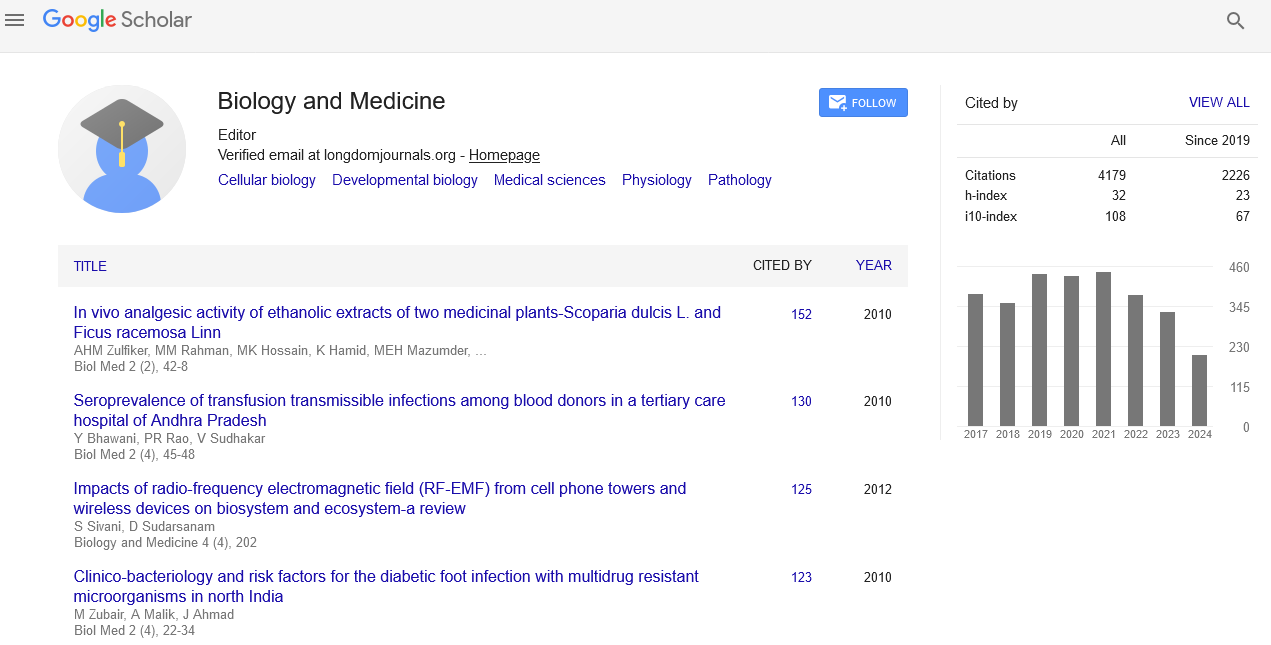Indexed In
- Open J Gate
- Genamics JournalSeek
- CiteFactor
- Cosmos IF
- Scimago
- Ulrich's Periodicals Directory
- Electronic Journals Library
- RefSeek
- Hamdard University
- EBSCO A-Z
- Directory of Abstract Indexing for Journals
- OCLC- WorldCat
- Proquest Summons
- Scholarsteer
- ROAD
- Virtual Library of Biology (vifabio)
- Publons
- Geneva Foundation for Medical Education and Research
- Google Scholar
Useful Links
Share This Page
Journal Flyer

Open Access Journals
- Agri and Aquaculture
- Biochemistry
- Bioinformatics & Systems Biology
- Business & Management
- Chemistry
- Clinical Sciences
- Engineering
- Food & Nutrition
- General Science
- Genetics & Molecular Biology
- Immunology & Microbiology
- Medical Sciences
- Neuroscience & Psychology
- Nursing & Health Care
- Pharmaceutical Sciences
Editorial - (2021) Volume 13, Issue 2
CRISPR and Genetic Engineering
Jamal ZweitReceived: 15-Feb-2021 Published: 19-Feb-2021, DOI: 10.35248/0974-8369.21.13.e108
CRISPR and Genetic Engineering
CRISPR is an acronym for Clustered Regularly Interspaced Short Palindromic Repeat. This name refers to the unique organization of short, partially palindromic repeated DNA sequences found in the genomes of bacteria and other microorganisms. While seemingly innocuous, CRISPR sequences are a crucial component of the immune systems of these simple life forms. The immune system is responsible for protecting an organism’s health and well-being. Just like us, bacterial cells can be invaded by viruses, which are small, infectious agents. If a viral infection threatens a bacterial cell, the CRISPR immune system can thwart the attack by destroying the genome of the invading virus. The genome of the virus includes genetic material that is necessary for the virus to continue replicating. Thus, by destroying the viral genome, the CRISPR immune system protects bacteria from ongoing viral infection.
Interspersed between the short DNA repeats of bacterial CRISPRs are similarly short variable sequences called spacers. These spacers are derived from DNA of viruses that have previously attacked the host bacterium. Hence, spacers serve as a ‘genetic memory’ of previous infections. If another infection by the same virus should occur, the CRISPR defense system will cut up any viral DNA sequence matching the spacer sequence and thus protect the bacterium from viral attack. If a previously unseen virus attacks, a new spacer is made and added to the chain of spacers and repeats.
Citation: Zweit J (2021) CRISPR and Genetic Engineering. Bio Med 13: e108.
Copyright: © 2021 Zweit J. This is an open access article distributed under the terms of the Creative Commons Attribution License, which permits unrestricted use, distribution, and reproduction in any medium, provided the original work is properly cited.


